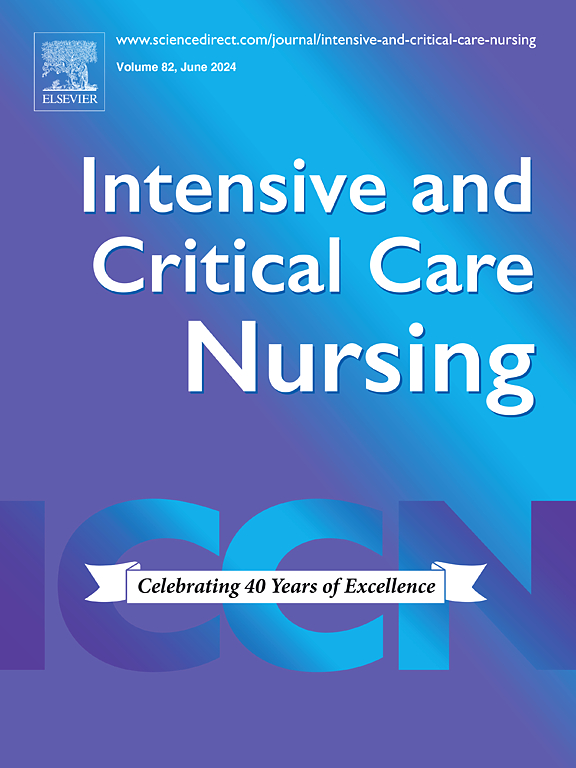Scaling patient safety: How National Early Warning Score 2 (NEWS2) drove systemic mortality reduction in an acute care setting
IF 4.7
2区 医学
Q1 NURSING
引用次数: 0
Abstract
Objectives
To retrospectively assess the impact of the National Early Warning Score 2 (NEWS2) on prognosis in a single-center fever clinic.
Methods
This was a single-center retrospective study based on real-world data. The period from April 2020-March 2021 was used as the control group, and the period from April 2021-March 2022 was used as the NEWS group to explore the changes in the mortality rates of patients before and after the implementation of the NEWS2. After the use of the NEWS2, as the application time progressed, the changing trend in the difference in the NEWS2 between discharge and admission was explored. In addition, the impact of the difference in the NEWS2 between discharge and admission on the prognosis of patients was explored.
Results
A total of 18,979 patients were included (6,699 in the control group and 12,280 in the NEWS group). The mortality rates in the control group were higher than those in the NEWS group at all time points (0.54 % vs. 0.22 % at 24 h, P < 0.001), (1.06 % vs. 0.55 % at 7 days, P < 0.001), and (1.57 % vs. 0.77 % at 28 days, P < 0.001). The results of multivariate logistic regression indicate that the outcomes remain significant after controlling for confounding factors. The NEWS2 difference increased from April 2021 to March 2022 (−0.64 ± 1.77 vs −0.91 ± 1.68). When the difference in the NEWS between discharge and admission < − 1, the mortality risk decreased.
Conclusions
Implementing NEWS2 in fever clinics reduced mortality and NEWS2 scores, providing valuable insights for optimizing patient management and enhancing clinical outcomes in fever clinics.
Implications for Clinical Practice
Incorporating NEWS2 into the routine of fever clinics allows rapid and accurate assessment of patients’ conditions. Taking action on the basis of this assessment may contribute to effective resource allocation and personalized care, ultimately improving patient outcomes.
扩展患者安全:国家预警评分2 (NEWS2)如何在急性护理环境中推动系统性死亡率降低
目的回顾性评价国家早期预警评分2 (NEWS2)对某单中心发热门诊患者预后的影响。方法本研究为基于真实数据的单中心回顾性研究。以2020年4月~ 2021年3月为对照组,2021年4月~ 2022年3月为NEWS组,探讨实施NEWS2前后患者死亡率的变化。在使用NEWS2后,随着使用时间的延长,探讨了出、入水期间NEWS2差值的变化趋势。此外,探讨出院与入院时NEWS2的差异对患者预后的影响。结果共纳入18979例患者(对照组6699例,NEWS组12280例)。对照组的死亡率在所有时间点均高于NEWS组(0.54%比0.22%,24 h, P <;0.001),(7天时1.06%比0.55%,P <;0.001),和(在28天1.57%比0.77%,P & lt;0.001)。多因素logistic回归结果表明,在控制混杂因素后,结果仍然显著。从2021年4月到2022年3月,NEWS2差异增加(- 0.64±1.77 vs - 0.91±1.68)。出院与入院时NEWS的差异<;−1,死亡风险降低。结论在发热门诊实施NEWS2可降低死亡率和NEWS2评分,为优化发热门诊患者管理和提高临床效果提供有价值的见解。对临床实践的影响将NEWS2纳入发热门诊的常规,可以快速准确地评估患者的病情。在此评估的基础上采取行动可能有助于有效的资源分配和个性化护理,最终改善患者的预后。
本文章由计算机程序翻译,如有差异,请以英文原文为准。
求助全文
约1分钟内获得全文
求助全文
来源期刊

Intensive and Critical Care Nursing
NURSING-
CiteScore
6.30
自引率
15.10%
发文量
144
审稿时长
57 days
期刊介绍:
The aims of Intensive and Critical Care Nursing are to promote excellence of care of critically ill patients by specialist nurses and their professional colleagues; to provide an international and interdisciplinary forum for the publication, dissemination and exchange of research findings, experience and ideas; to develop and enhance the knowledge, skills, attitudes and creative thinking essential to good critical care nursing practice. The journal publishes reviews, updates and feature articles in addition to original papers and significant preliminary communications. Articles may deal with any part of practice including relevant clinical, research, educational, psychological and technological aspects.
 求助内容:
求助内容: 应助结果提醒方式:
应助结果提醒方式:


